How to Execute a Space Landing?

Have you ever wondered how the Apollo Command Module (CM) lands back on Earth? Or How does the modern-day Soyuz spacecraft lands back on Earth?
Unlike aircraft, these spacecraft cannot fly gently down to Earth. They do not have an aerodynamic shape to produce any meaningful amount of lift to fly down. Also, the speed of their entry back to earth is ridiculous. Their spacecraft reaches a speed of 38,600 Km when entering Earth. This produces a fireball that goes to a temperature of 2,760 Celsius around the spacecraft. So, knowing these conditions, how do you land from space?
Well, scientists have made a myriad of methods to land things from space. And here are some of the most effective and most used methods.
Landing Back to Earth: Water
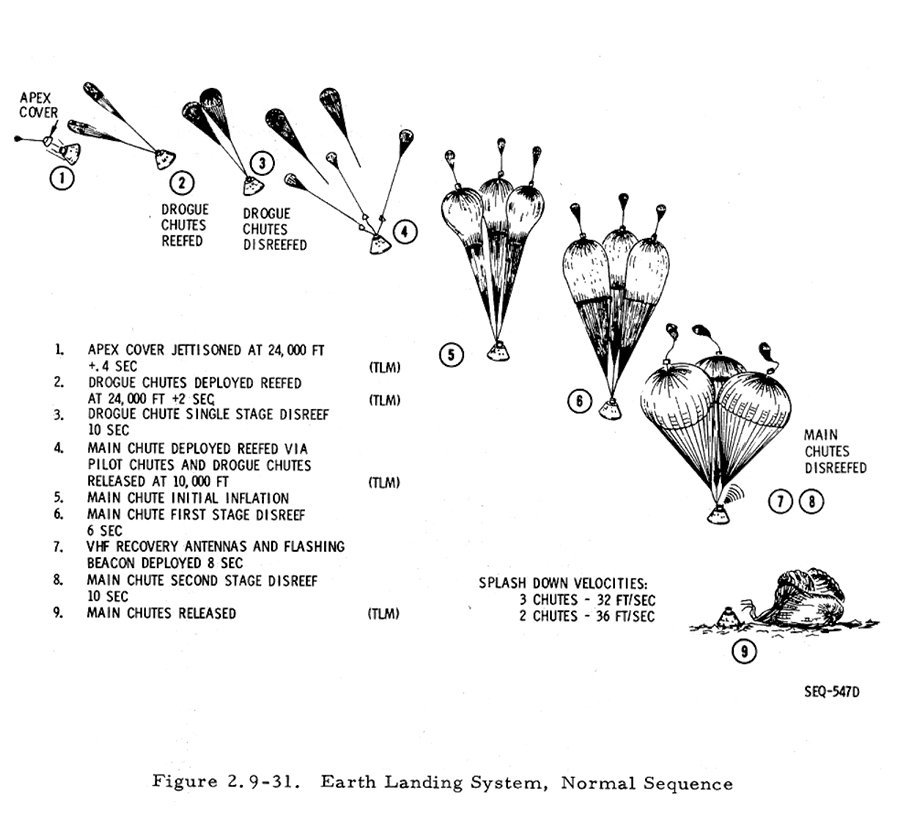
During Project Apollo, The National Aeronautics and Space Administration (NASA) designed the Earth Landing System (ELS). This process starts when the Apollo crew is about to reach Earth’s orbit. Before entering into Earth’s orbit the Command Module (CM) detaches from the Service Module (SM). And, Housed in the CM are the astronauts. While the SM provides the fuel, electricity, and other services for the CM. Then after disconnection, the CM continues to Earth and prepares itself for atmospheric entry.
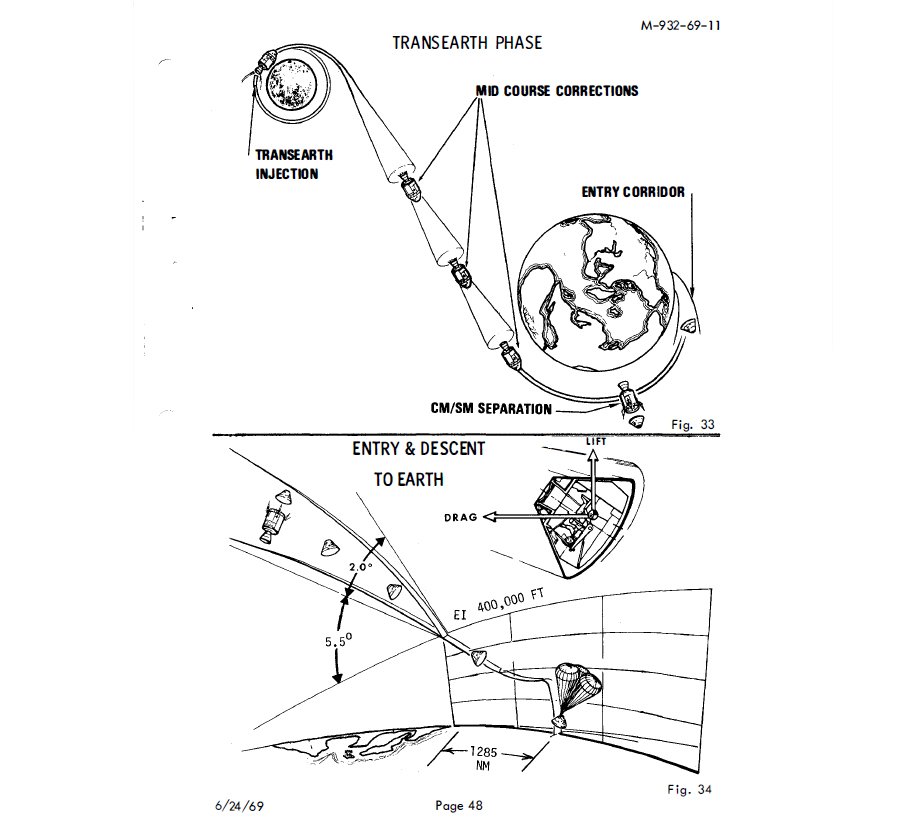
Now, the CM orients itself for the descent. This orientation is to position the protective heatshield forward. They did this to protect the CM from the extreme temperatures when entering Earth’s atmosphere. During entry, a drogue parachute will deploy 8 minutes after entry at an altitude of 7,010.4 meters. And then, the CM will deploy its main parachutes 9 minutes after entry. The main parachute will decrease the speed of the CM. NASA does this to prevent the Apollo crew from dying from impact. In addition, the ocean serves as a cushion for the CM.
Being Greeted in the Ocean
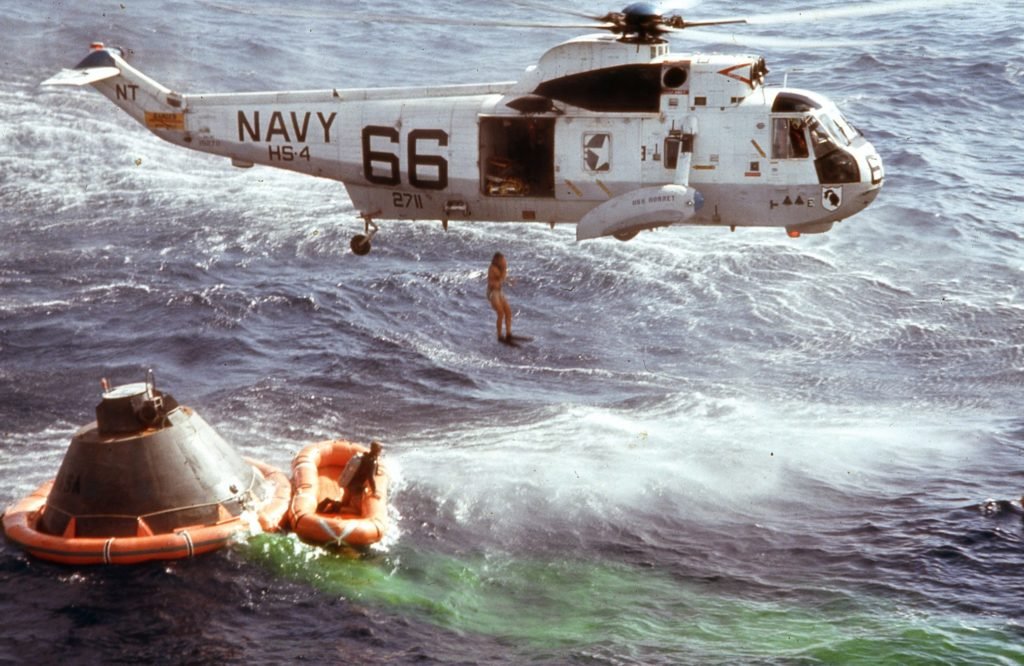
Greeting the Apollo crew in the ocean is the US Navy. NASA placed an aircraft carrier in the vicinity of the CM’s landing site. The carrier will launch a recovery helicopter once it has spotted the Apollo. Carrying swimmers, the helicopter will drop them at the CM. These divers will then install the flotation collar on it. This is to prevent the module from sinking.
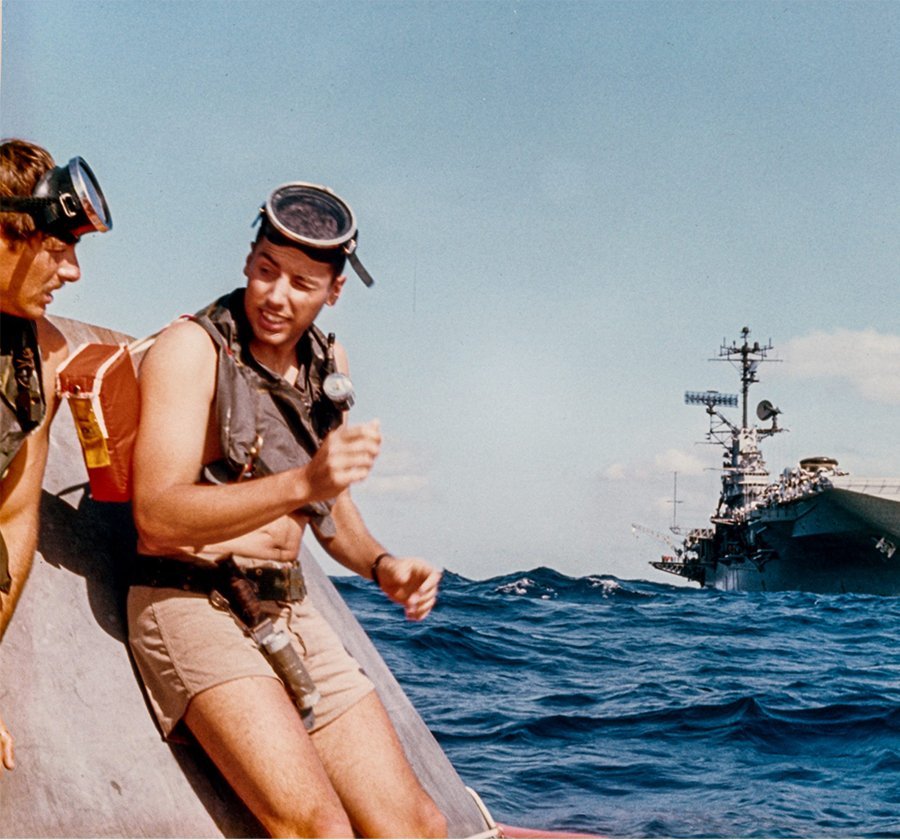
Afterward, the helicopter will now recover the astronaut from the CM. The astronauts are lifted into the helicopter using a crib. Once inside the helicopter, a physician will assist the astronauts if they are injured during the landing. Then the helicopter will then return to the carrier– once all the astronauts are recovered. Later on, another ship will sail by the CM for its recovery.

And this is how NASA lands its astronauts back on Earth.
Landing on Solid Land
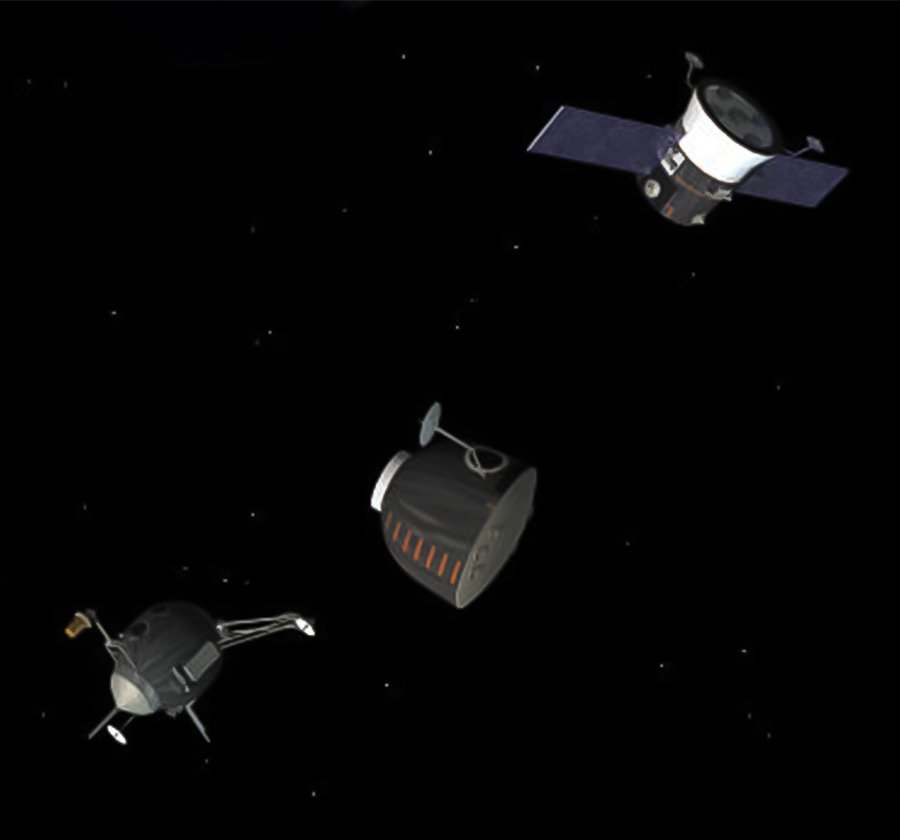
The Soviet Union has a different way of landing their cosmonauts. Unlike the US, the Russians do not have a powerful navy that can recover their Soyuz spacecraft in the oceans. Furthermore, the Soviet Union has fewer bodies of water to land in. This means they have to land their Soyuz on hard ground.
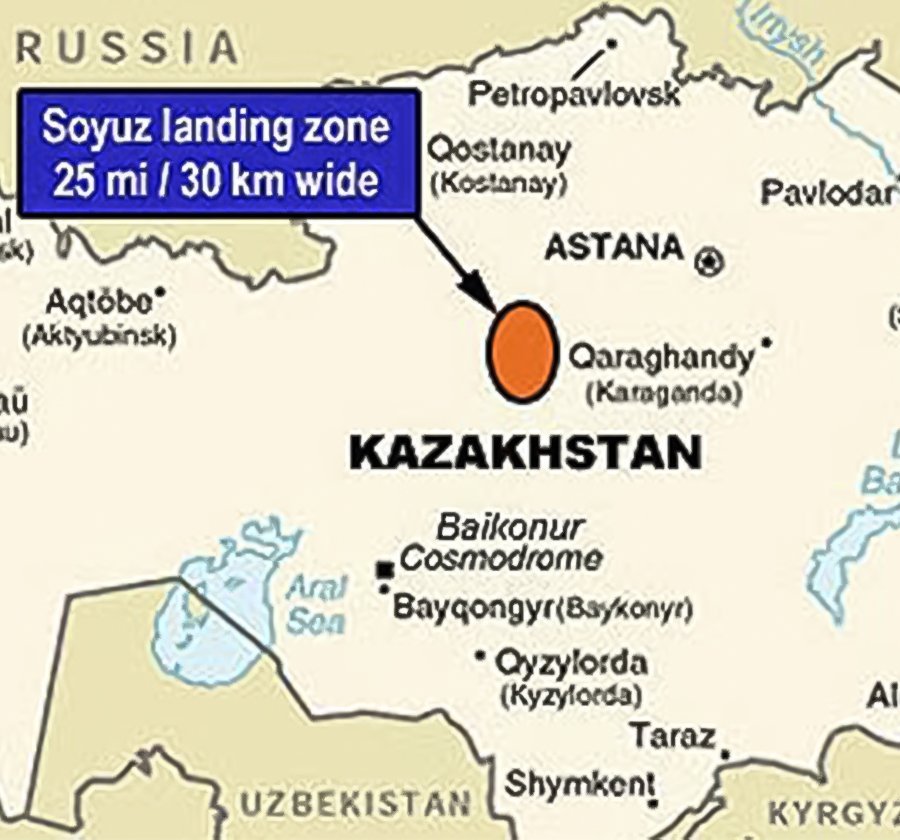
The Soviets’ way of landing the Soyuz is similar to NASA’s method. They also use parachutes to decrease the speed of the Soyuz during entry. Furthermore, the Soviets chose large openings like plains or flatlands as their landing site. This prevents the Soyuz from hitting trees, hills, and other geological formations. And also allow the recovery team to immediately reach the Soyuz. Because of this, they mostly land their spacecraft in the large plains of Kazakhstan.
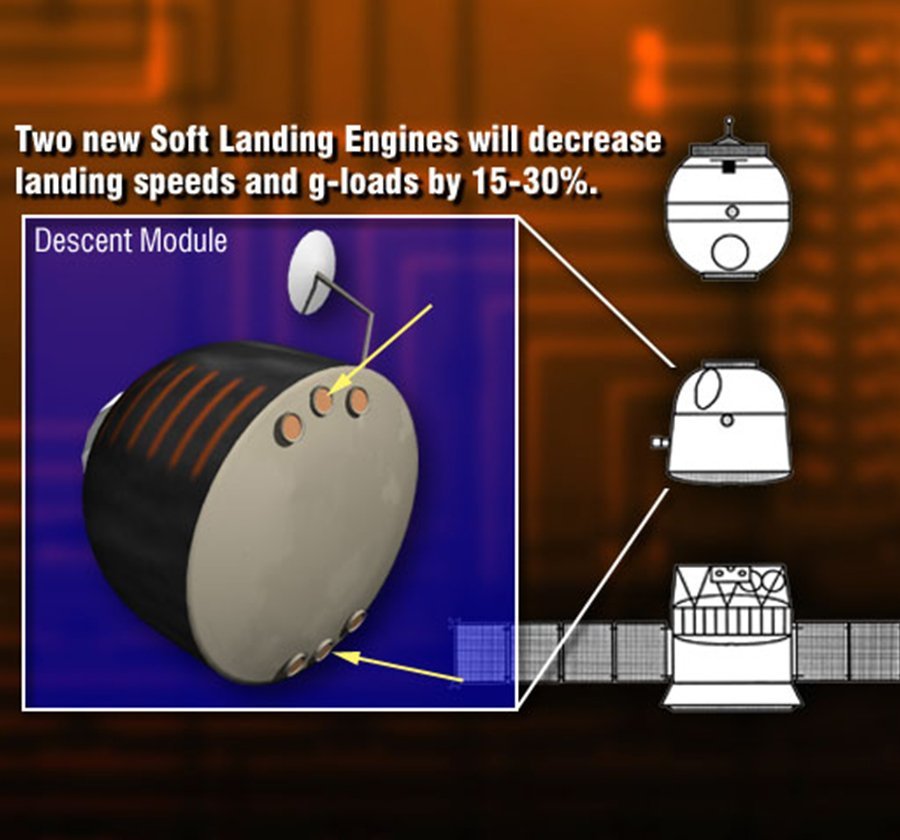
The Soyuz is unique because compared to NASA’s CM it has landing engines. These are rockets at the bottom of the Soyuz. Because, unlike the ocean, the solid ground cannot safely cushion the spacecraft. They ignite when the Soyuz is near the ground. This is to make the landing safer for the cosmonauts. Because the rockets will further decrease the speed of the Soyuz before it hits the ground.
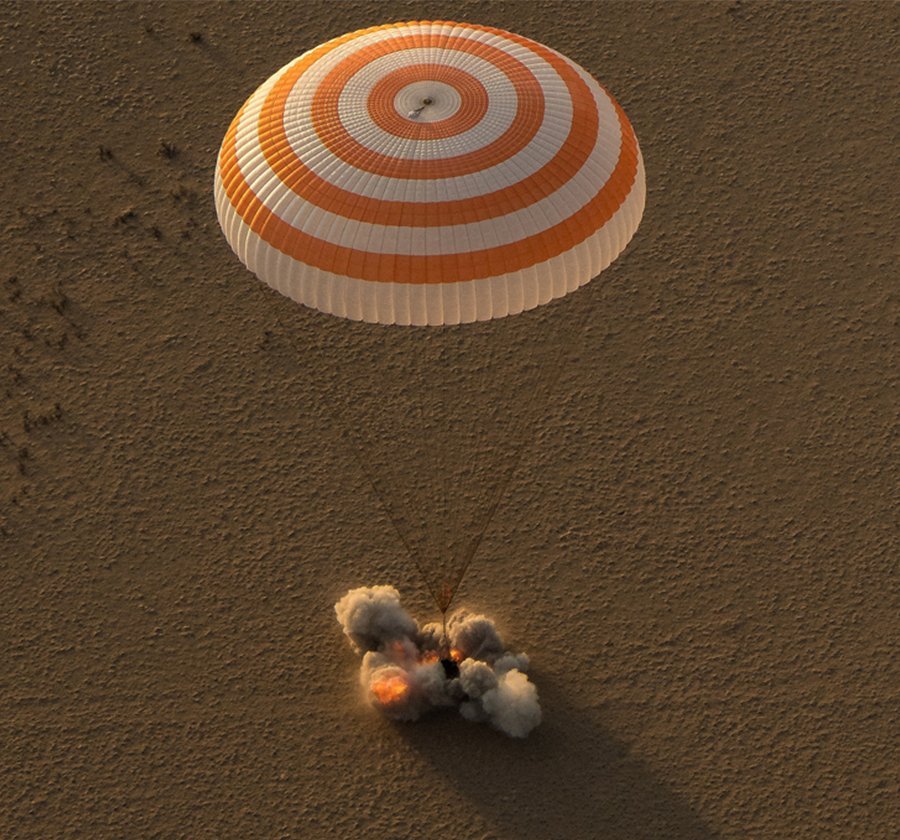
The Russians would then send a team to the Soyuz landing site to recover the cosmonauts. This is similar to NASA’s method but the only difference is that it’s on the ground. Physicians will accompany the team to provide medical aid if need be. In addition, astronauts or cosmonauts are still using this method when returning to Earth from the International Space Station. So, this is how you land a spacecraft on solid ground.
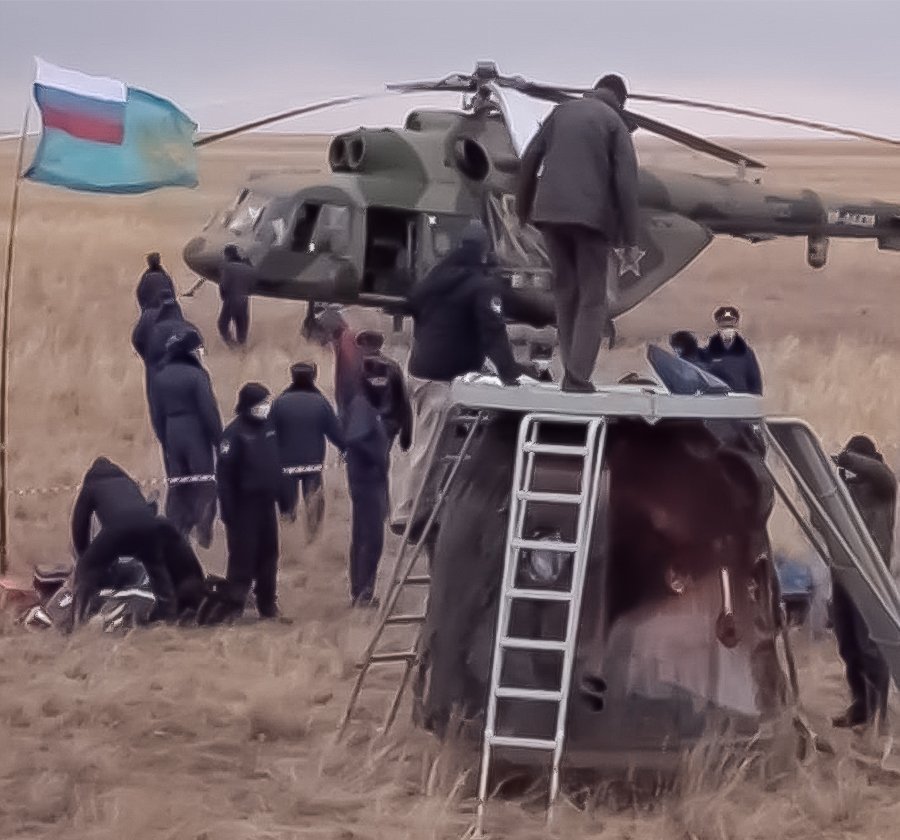
Which Do You Prefer?
Now, I have a question for you. Which method would you prefer when landing back on Earth? Would you prefer to splash in the oceans? Or would like to land with rockets? Tell us in the comments your answers.
Martin is your average manileño. He loves history and traveling around his beloved Metro Manila. His passion is to make the past come to life by exposing past stories not known by the general public. Tag along with him as he visits the past through the present.






